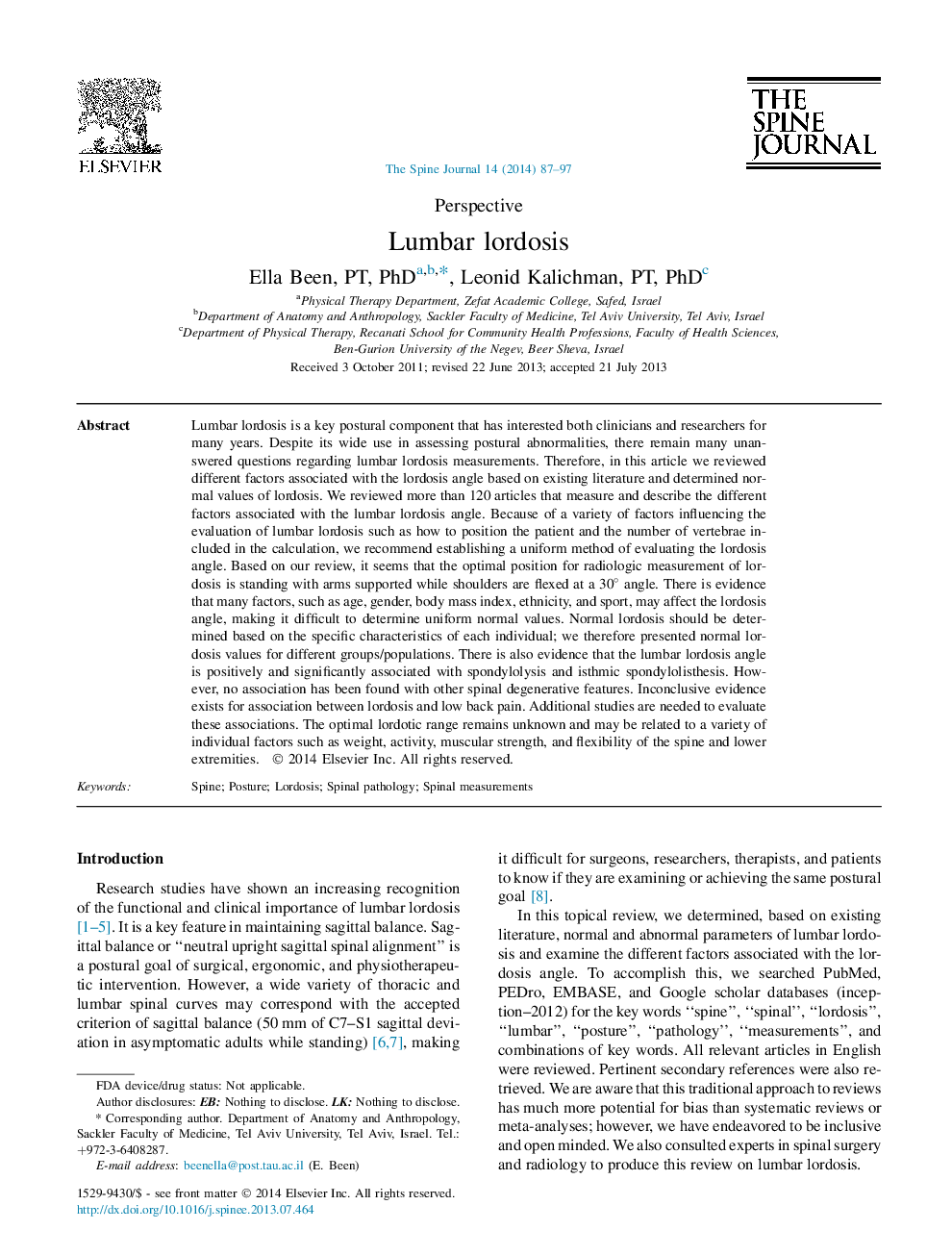| Article ID | Journal | Published Year | Pages | File Type |
|---|---|---|---|---|
| 6212604 | The Spine Journal | 2014 | 11 Pages |
Lumbar lordosis is a key postural component that has interested both clinicians and researchers for many years. Despite its wide use in assessing postural abnormalities, there remain many unanswered questions regarding lumbar lordosis measurements. Therefore, in this article we reviewed different factors associated with the lordosis angle based on existing literature and determined normal values of lordosis. We reviewed more than 120 articles that measure and describe the different factors associated with the lumbar lordosis angle. Because of a variety of factors influencing the evaluation of lumbar lordosis such as how to position the patient and the number of vertebrae included in the calculation, we recommend establishing a uniform method of evaluating the lordosis angle. Based on our review, it seems that the optimal position for radiologic measurement of lordosis is standing with arms supported while shoulders are flexed at a 30° angle. There is evidence that many factors, such as age, gender, body mass index, ethnicity, and sport, may affect the lordosis angle, making it difficult to determine uniform normal values. Normal lordosis should be determined based on the specific characteristics of each individual; we therefore presented normal lordosis values for different groups/populations. There is also evidence that the lumbar lordosis angle is positively and significantly associated with spondylolysis and isthmic spondylolisthesis. However, no association has been found with other spinal degenerative features. Inconclusive evidence exists for association between lordosis and low back pain. Additional studies are needed to evaluate these associations. The optimal lordotic range remains unknown and may be related to a variety of individual factors such as weight, activity, muscular strength, and flexibility of the spine and lower extremities.
